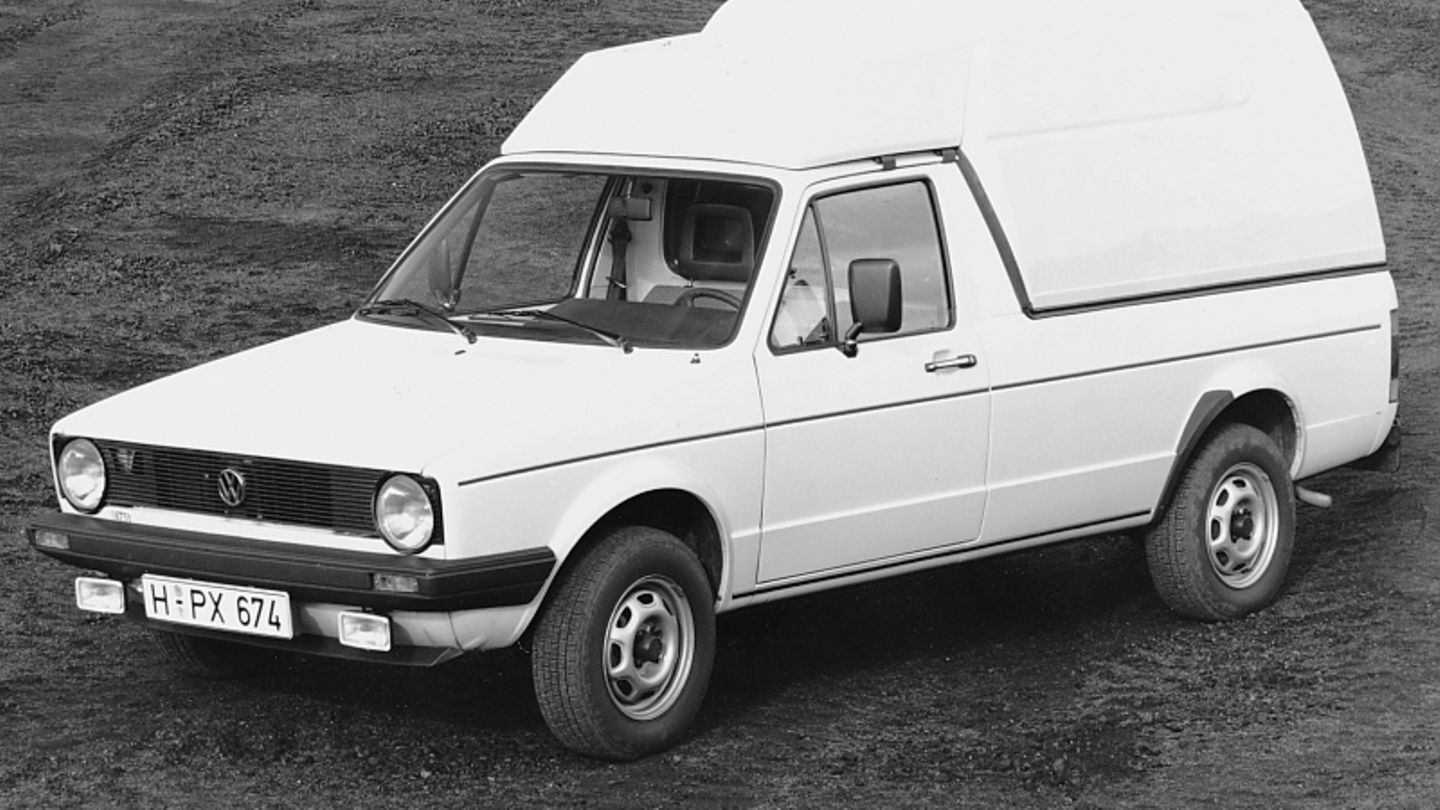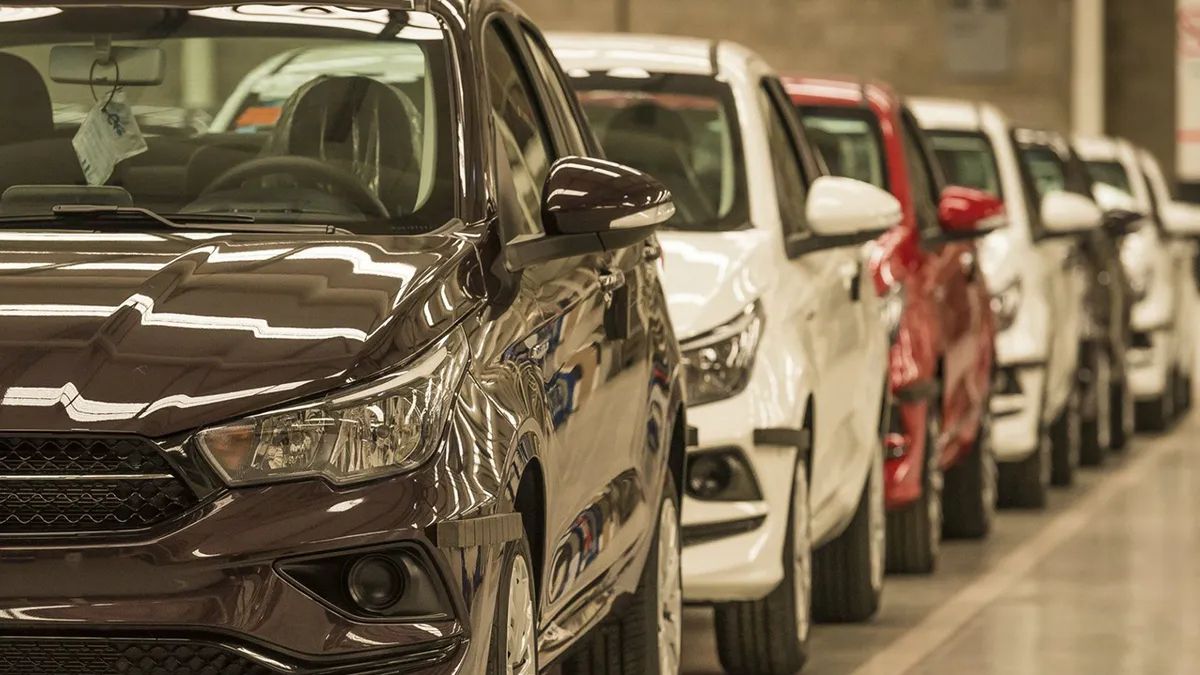There are bigger car legends, more coveted classics, and unquestionably more iconic designs. But the VW Caddy has not only been a part of the street scene in Europe for more than four decades. The first generation in particular has long been a coveted classic car – properly cared for.
If you ask about an unusual classic car, you will get countless answers. But the VW Caddy is unlikely to be one of them. The Caddy, originally conceived as a commercial offshoot of the first Golf, has been around since the late 1970s. At the time, it was not only intended for Europe, but primarily for gaining a foothold on the American continent. There it was called the VW Rabbit Pick-Up, which rolled off the assembly line at the then US plant in Pennsylvania with rectangular headlights. In those days, the mighty pick-ups were just as coveted in the United States as they are today. A few classes smaller, those responsible from the Volkswagen Group promised a correspondingly large demand from North American customers. Until it was launched on the US market in 1992/1993, however, the Caddy had no chance of achieving legendary status like the Bully, which Volkswagen had just made a cult car for surfers as a Samba variant. The caddy was never a beau and acted more like an honest worker. It struggled in North America because it was simply too small, had no all-wheel drive and could never scratch its larger colleagues from Dodge, Chevrolet or Ford in terms of payload.
The situation in Europe was very different, because the 4.37 meter long VW Caddy, which was manufactured near Sarajevo from 1983, served a segment that didn’t actually exist. The number of pick-ups was more than manageable and then the two-seater load master with the boxy Golf front appealed to completely different customers than, for example, the Mercedes G-Class, which was also available as a pick-up in the late 1970s and early 1980s . But master painters, plumbers, garden centers and delivery services gradually began to enjoy the versatile pick-up, which, with the closed loading cabin, was also used to transport wheelchairs and flower boxes. The space available on the flat loading area was significantly larger than that of the small driver’s cab, where, given the smaller doors of the Golf four-door, not only tall passengers could enjoy little comfort. It looked a little better with the permanently installed loading cabin, because the rear wall to the loading area was omitted in these vehicles, which provided even more space than the optionally available plastic rear window curved to the rear. Seats, instruments and controls: everything from the Golf I.
The Caddy was particularly popular with organizations such as the Malteser Hilfsdienst, the Red Cross and Johanniter Unfallhilfe for transport services for the disabled, while the Post Office was happy to use the Caddy as a variable delivery van. Most VW Caddys were on the road with the tired 1.6-liter diesel without turbocharging, which made a manageable 40 kW / 54 hp, which was sufficient in everyday commercial use and reduced operating costs to a minimum. By today’s standards, the two four-cylinder petrol engines with 1.5 and 1.6 liters displacement, which achieved 51 kW / 70 and 55 kW / 75 hp, are only slightly more dynamic. Only a few models are still on the road with the higher-torque 1.8-liter petrol engine of the Golf Cabrio, which delivers 70 kW / 95 hp and allows the payload of up to 620 kilograms to be transported noticeably faster. However, depending on the structure, a top speed of more than 160 km/h is not possible anyway.
After production in Europe had to be ended in 1992 due to the Yugoslav war, the first Caddy generation was still produced in South Africa as a commercial vehicle until 2006; sometimes even as a 90 kW / 122 hp sports version. In Europe, too, the former US model has increasingly become a tuning star over the years. The two-seater still benefits from the fact that the inexpensive parts of the VW Golf I could not only be used for the drive, body and interior. Some fans gave the VW Caddy true wings with GTI and later GTI 16V engines up to 140 hp.
While production of the first generation migrated to South Africa, the Caddy II was introduced in 1995, but was technically based on the Seat Inca, which rolled off the assembly line in Martorell, Spain. As a result, the Caddy II lost its unique charm, as did the Caddy, which from 1996 became a twin model of the Skoda pick-up. It was not until 2003 that the VW Caddy again became a central model in Volkswagen’s commercial vehicle division. Over the years, it became a compact family van, which was also available as a camper or all-wheel drive vehicle, among other things. His opponents in the early 2000s: models like Peugeot Partner or Renault Kangoo. The latest and fifth generation of the VW Caddy was presented in 2020. Finding a good used first generation Caddy is not easy. The offer – especially for untinkered vehicles – is thin and starts at 6,000 euros. For a well-kept Caddy – possibly slightly refined – 12,000 to 15,000 euros are quickly due.
Source: Stern
I am a 24-year-old writer and journalist who has been working in the news industry for the past two years. I write primarily about market news, so if you’re looking for insights into what’s going on in the stock market or economic indicators, you’ve come to the right place. I also dabble in writing articles on lifestyle trends and pop culture news.




